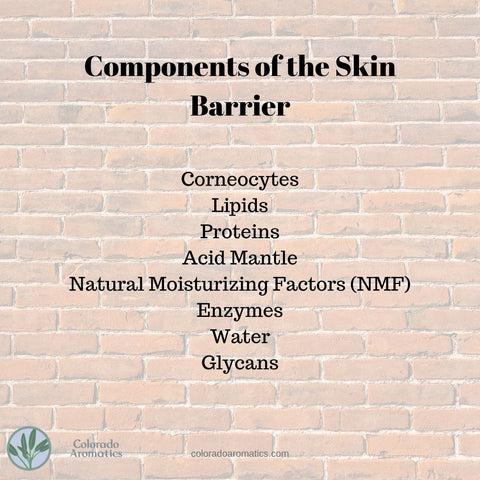Why the Skin Barrier Matters—and How to Care for It
Your skin does a lot more than just cover your body. One of its most critical roles is serving as a barrier between you and the outside world. This barrier function keeps harmful substances, like pollutants, bacteria, and allergens out, while helping your body retain moisture and essential nutrients. In healthy skin, very few substances can actually pass through this barrier.
That’s why the primary goal of skin care isn’t just about beauty, it’s about protecting and supporting this vital barrier so your skin can keep doing its job.
What Is the Skin Barrier?
The skin barrier is largely composed of the stratum corneum, the outermost layer of the epidermis. This layer consists of corneocytes (dead skin cells) packed with keratin and surrounded by a matrix of lipids. Though these cells are technically “dead,” the stratum corneum is a surprisingly active layer—it plays a key role in hydration, defense, and exfoliation.

A useful way to imagine this structure is the “bricks and mortar” model:
-
The bricks are the protein-rich corneocytes.
-
The mortar is made up of extracellular lipids including ceramides, fatty acids, and cholesterol. These lipids form smooth, intercellular layers that seal in moisture and keep out irritants.
Among the most important lipids is linoleic acid, an essential fatty acid that the body can't produce on its own, it must be obtained through diet or applied topically. A deficiency in linoleic acid can lead to dry, flaky skin and a weakened barrier.
The Role of the Natural Moisturizing Factor (NMF)
Another key component of the barrier is the Natural Moisturizing Factor, or NMF. This is a group of water-attracting compounds inside corneocytes that helps maintain hydration. It includes:
-
Amino acids
-
Lactic acid
-
Urea
-
Electrolytes
-
Sugars
-
Pyrrolidone carboxylic acid (PCA)
These molecules bind water in the skin, but their levels can decrease with age, excessive bathing, sun exposure, or stress—all of which weaken the skin’s barrier and leave it more vulnerable.
Even though the stratum corneum is composed of dead cells, it is metabolically active. Enzymes in this layer are continually processing proteins and lipids, supporting exfoliation, and maintaining NMF levels. But for all of this to function properly, the skin must remain well-hydrated.

What Damages the Skin Barrier?
Damage to the skin barrier often shows up as:
-
Dry, flaky, or itchy skin
-
Increased sensitivity or redness
-
Fine lines and dullness
-
Skin conditions like eczema, psoriasis, or even cold sores
Common culprits of barrier disruption include:
-
Harsh cleansers or over-cleansing, which can strip away essential lipids
-
Surfactants, which bind to skin proteins and alter their structure
-
Excessive exfoliation, especially from strong acids or physical scrubs
-
Environmental stressors, such as wind, dry air, and UV exposure
-
Psychological stress, which can increase inflammation and affect skin repair
How to Strengthen and Repair the Skin Barrier
Fortunately, with the right skincare routine, the barrier can be restored. Here’s what to look for in barrier-supporting products:
-
Moisturizers rich in:
-
Essential fatty acids like linoleic acid
-
Humectants like glycerin or hyaluronic acid
-
Occlusives such as plant butters or oils to seal in hydration
-
Antioxidants to protect against oxidative stress
-
-
Gentle cleansers that won’t strip your skin
-
Consistent hydration, both topically and internally
-
Sun protection, even on cloudy days
At Colorado Aromatics, our Springtide Gold Face Cream is a favorite for strengthening the skin barrier. It combines botanical antioxidants, hydrating ingredients, and barrier-repairing oils to help skin stay resilient, especially if you spend a lot of time outdoors.
The Bottom Line
Your skin barrier is your body’s first line of defense and skin care is about protecting that function, not just pampering. As awareness of barrier health grows (even the New York Times recently highlighted it), more people are understanding that healthy skin isn’t about having a 10-step routine. It’s about the right steps to support your skin’s natural functions.
If your skin feels dry, tight, or sensitive, it may be your barrier asking for help. With a little care—and the right ingredients—you can help your skin recover, thrive, and protect you the way it’s meant to.

